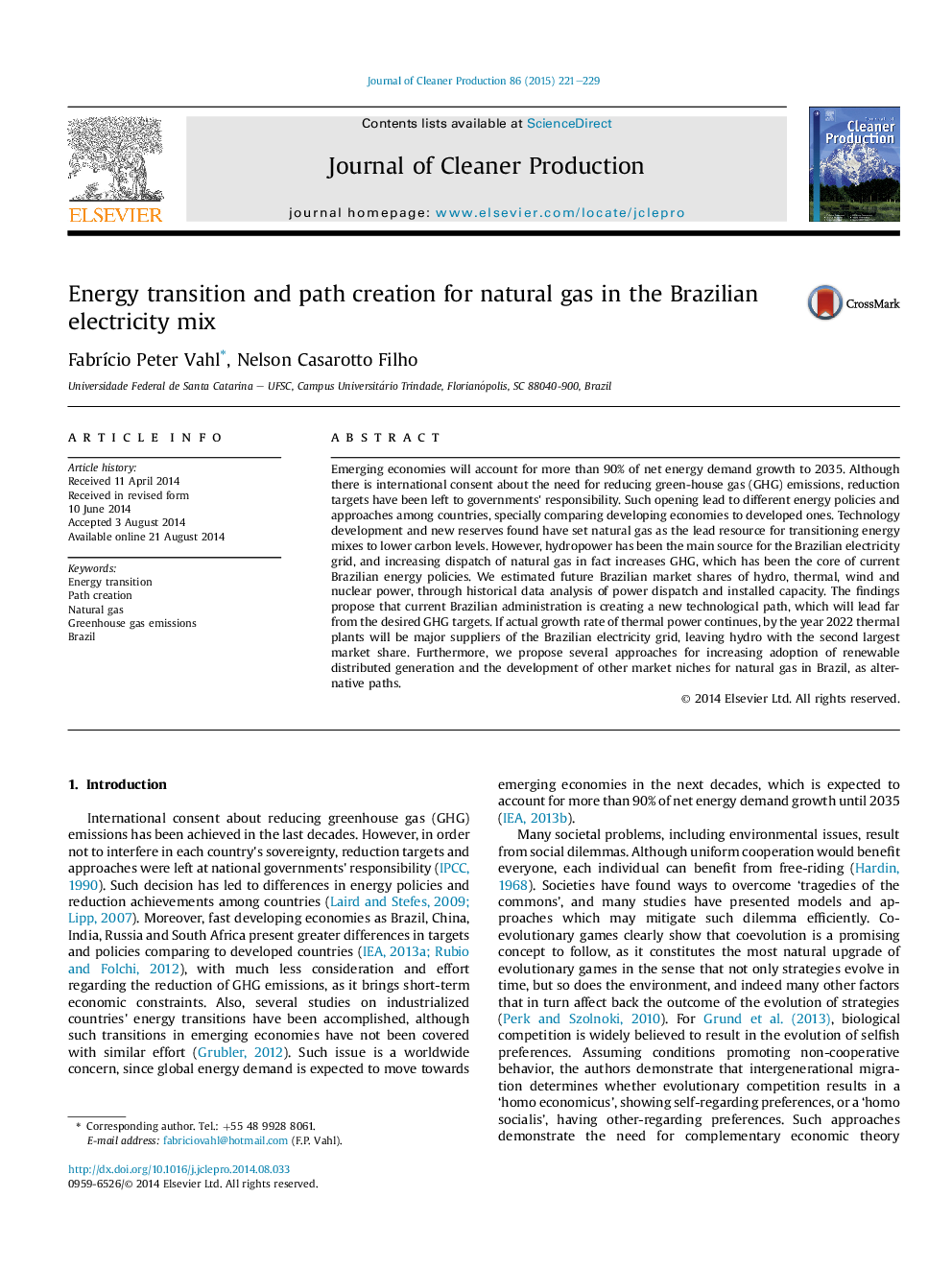| Article ID | Journal | Published Year | Pages | File Type |
|---|---|---|---|---|
| 1744719 | Journal of Cleaner Production | 2015 | 9 Pages |
Abstract
Emerging economies will account for more than 90% of net energy demand growth to 2035. Although there is international consent about the need for reducing green-house gas (GHG) emissions, reduction targets have been left to governments' responsibility. Such opening lead to different energy policies and approaches among countries, specially comparing developing economies to developed ones. Technology development and new reserves found have set natural gas as the lead resource for transitioning energy mixes to lower carbon levels. However, hydropower has been the main source for the Brazilian electricity grid, and increasing dispatch of natural gas in fact increases GHG, which has been the core of current Brazilian energy policies. We estimated future Brazilian market shares of hydro, thermal, wind and nuclear power, through historical data analysis of power dispatch and installed capacity. The findings propose that current Brazilian administration is creating a new technological path, which will lead far from the desired GHG targets. If actual growth rate of thermal power continues, by the year 2022 thermal plants will be major suppliers of the Brazilian electricity grid, leaving hydro with the second largest market share. Furthermore, we propose several approaches for increasing adoption of renewable distributed generation and the development of other market niches for natural gas in Brazil, as alternative paths.
Related Topics
Physical Sciences and Engineering
Energy
Renewable Energy, Sustainability and the Environment
Authors
FabrÃcio Peter Vahl, Nelson Casarotto Filho,
